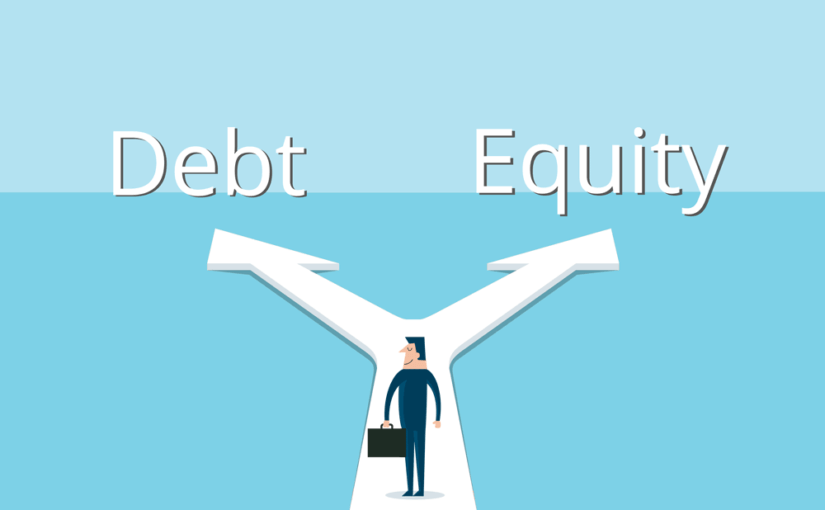
Debt and Equity Essentials for Financial Success
In the realm of personal and corporate finance, understanding the dynamics of debt and equity is crucial for achieving long-term financial success. These two fundamental concepts play pivotal roles in shaping financial strategies, determining capital structure, and managing risk. Whether you’re an individual investor, a small business owner, or a corporate executive, grasping the essentials of debt and equity can empower you to make informed decisions that align with your financial goals.
Understanding Debt
Debt, in simplest terms, is borrowed money that must be repaid over time, typically with interest. It serves as a financial tool to fund immediate expenses or investments that would otherwise be unaffordable with available cash. There are various types of debt, including:
- Consumer Debt: This includes credit cards, personal loans, and installment loans used for everyday expenses or large purchases.
- Corporate Debt: Businesses often utilize debt to finance operations, expand infrastructure, or invest in growth opportunities.
- Government Debt: Governments borrow to finance public projects, stimulate the economy, or manage budget deficits.
Debt is categorized into short-term and long-term based on its repayment timeline and can be secured (backed by collateral) or unsecured (based on creditworthiness). While debt provides immediate access to capital, it also comes with obligations and interest payments, which can impact cash flow and financial flexibility.
Exploring Equity
Equity represents ownership in an asset or business. Unlike debt, equity does not require repayment of principal or interest. Instead, equity holders participate in the profits and losses of the entity. Key forms of equity include:
- Stocks: Ownership shares in a publicly traded company, offering shareholders voting rights and dividends based on company performance.
- Private Equity: Investments made directly in private companies or through private equity funds, often with a focus on growth and eventual sale or public offering.
- Real Estate Equity: Ownership stake in real property, providing potential rental income and appreciation over time.
Equity holders bear the risk of fluctuating asset values and business performance but also have the potential for substantial returns, especially in growing enterprises.
Strategic Use of Debt and Equity
Successful financial management involves balancing debt and equity to optimize capital structure and achieve financial goals:
- Capital Structure: Finding the right mix of debt and equity financing influences financial stability, cost of capital, and risk management.
- Risk Management: Diversifying between debt and equity investments can mitigate overall portfolio risk and enhance returns.
- Financial Flexibility: Leveraging debt for growth while preserving equity can enhance liquidity and operational flexibility.

Practical Tips for Individuals and Businesses
For individuals seeking financial stability and growth:
- Debt Management: Prioritize high-interest debt repayment and maintain a manageable debt-to-income ratio.
- Investment Strategies: Diversify investments across asset classes, including stocks, bonds, and real estate, to balance risk and return.
- Emergency Fund: Build a liquid reserve to cover unexpected expenses and reduce reliance on debt during financial hardships.
For businesses aiming to optimize financial performance:
- Cost of Capital: Evaluate financing options to minimize the cost of capital while maximizing shareholder value.
- Investor Relations: Communicate transparently with shareholders and potential investors to build trust and attract capital.
- Financial Planning: Develop strategic plans that align capital investments with long-term growth objectives and market conditions.
Conclusion
Mastering the fundamentals of debt and equity is essential for navigating the complex landscape of personal and corporate finance. By understanding how these financial instruments work, their respective advantages and risks, and their strategic applications, individuals and businesses can make informed decisions that pave the way for sustained financial success. Whether you are looking to manage personal debt, optimize business financing, or enhance investment strategies, integrating debt and equity effectively can set you on a path toward achieving your financial goals.
People also ask
Why is debt to equity ratio important? The debt to equity ratio is a simple formula to show how capital has been raised to run a business. It's considered an important financial metric because it indicates the stability of a company and its ability to raise additional capital to grow.
"Debt" involves borrowing money to be repaid, plus interest, while "equity" involves raising money by selling interests in the company. Essentially you will have to decide whether you want to pay back a loan or give shareholders stock in your company.
Debt financing refers to taking out a conventional loan through a traditional lender like a bank. Equity financing involves securing capital in exchange for a percentage of ownership in the business.
Equity financing places no additional financial burden on the company; however, the downside can be quite large. The main advantage of debt financing is that a business owner does not give up any control of the business, as they do with equity financing.
An optimal capital structure is the best mix of debt and equity financing that maximizes a company's market value while minimizing its cost of capital. Minimizing the weighted average cost of capital (WACC) is one way to optimize for the lowest cost mix of financing.


